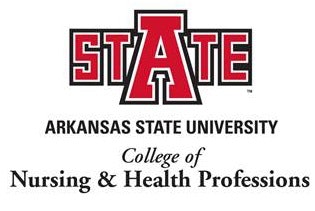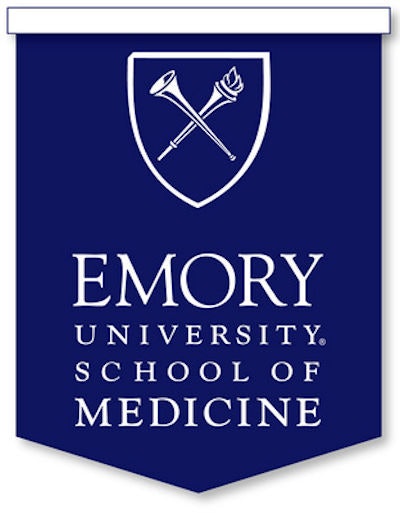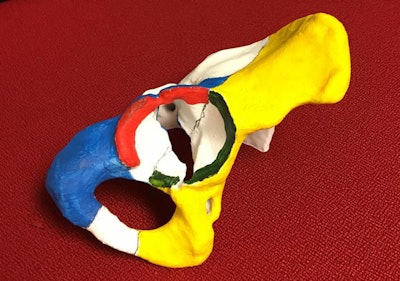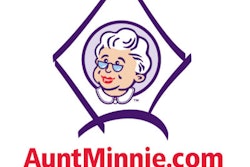
Minnies finalists, page 2
Best Radiologic Technologist Training Program
Arkansas State University, Jonesboro, AR

Arkansas State University offers a Bachelor of Science in Radiologic Science (BSRS) degree. The school has set up its radiological sciences program on a "one plus one" model, meaning that students start their sophomore year in radiography and then choose one of six tracks for their senior year after having successfully completed the radiography curriculum.
The six tracks in the bachelor's degree are cardiovascular-interventional technology, MRI, mammography/breast ultrasound, medical imaging informatics, radiation therapy, and diagnostic medical sonography.
Arkansas State also offers a "bridge" program, in which radiologic technologists who have an associate degree from an accredited program or who are registry-eligible can pursue the BSRS degree in general radiography. Edwin Wallace is the clinical coordinator of the program.
Emory University, Atlanta, GA

Emory University's Department of Radiology and Imaging Sciences highlights the fact that it is one of the largest academic radiology departments in the U.S. Within the department, the medical imaging program offers a Bachelor of Medical Science in Medical Imaging (BMSc) degree, which the program believes helps graduates advance more rapidly once their careers start.
Emory has a five-year average pass rate of 94.2% for graduates taking the credentialing exam within six months of graduation and a five-year job placement rate of 94%. In addition, 71% of students have completed the program over the past five years.
Emory was the runner-up in Best Radiologic Technologist Training Program category in the 2017 Minnies, losing out to Thomas Jefferson University. Will the program's luck be better this year?
Most Significant News Event in Radiology
Continuing debate over safety of gadolinium MRI contrast

The debate over the safety of gadolinium-based contrast agents (GBCAs) for MRI scans has been going on for years, and if this year's Minnies are any indication, it shows no sign of abating.
The latest iteration of the debate has focused on gadolinium deposition, in which trace elements of gadolinium remain in the brain and body tissue of patients after their MRI scans, in some cases for years. In 2018, most of the discussion has centered on developing a better understanding of the mechanism by which gadolinium deposition occurs.
For example, two papers published in 2018 have focused on cerebrospinal fluid as the route by which gadolinium moves from the bloodstream into the brain, and both found gadolinium in brain tissue even in patients who have intact blood-brain barriers. One of these papers, by researchers from the Mayo Clinic in Rochester, MN, is a finalist for the Best Scientific Paper award in the Minnies.
Fortunately, the research community took a major step toward a better understanding of gadolinium deposition with the publication of a research road map to guide investigations into the phenomenon. Unveiled on September 11 in Radiology, the road map covers both clinical and animal research, and it will explore questions such as the long-term biodistribution of GBCAs, the potential toxicity of retained gadolinium, and whether certain populations are more vulnerable.
Growth of artificial intelligence and machine learning in radiology

Artificial intelligence (AI) has quickly become one of the hottest -- if not the hottest -- topic in radiology. Indeed, the growing potential of artificial intelligence was named the Most Significant News Event in the 2017 and 2016 Minnies competitions, and RSNA 2017 was widely considered to have been dominated by AI.
Radiologists have moved beyond the fear and apprehension stage with respect to AI, but the technology still has not become a mainstream clinical tool. The debate over AI seems to be focusing on the best way to put deep-learning algorithms to use without dragging down radiologist workflow.
For example, how will AI software be integrated with PACS? Will AI algorithms run automatically in the background and only notify the radiologist when suspicious findings are detected? Or will radiologists launch AI algorithms from the PACS when needed? And how will radiologists get access to algorithms -- on an à la carte basis or through a marketplace like an app store?
All of these questions will be sorted out in time. Until then, the radiology community will be waiting with bated breath to see if AI will complete a Minnies hat trick this year.
Biggest Threat to Radiology
Commoditization of radiology services

Once again, commoditization was voted by the Minnies expert panel as one of the leading threats that keep radiologists up at night.
Commoditization has been named as the Biggest Threat to Radiology in each of the four previous Minnies events. It's a run matched only by the fear of turf battles that dominated the Minnies four years running some 10 to 15 years ago, when it looked like cardiologists were taking over the world.
Perhaps the reason why the fear of commoditization has persisted for so long is because the source of the threat keeps morphing. Whereas five years ago it might seem that teleradiology groups taking over hospital contracts were the enemy, now radiologists worry that machines might make them dispensable.
Radiologists are starting to warm up to artificial intelligence, but odds are there's a still-newer threat on the horizon likely to keep the field worrying in the years to come.
Corporate takeovers of independent radiology groups

This bête noire has replaced artificial intelligence, last year's runner-up in the Biggest Threat to Radiology category.
It's no surprise. While radiologists seem less fearful that AI will take their jobs, they aren't so sure about the corporation down the street. The traditional model of independent radiology groups working for themselves under contract with the local hospital is beginning to seem anachronistic as corporations buy up local practices with the goal of establishing "national radiology groups."
It's a trend that strikes at the heart of radiologists' vision of themselves -- not so much that a national corporation will put them out of a job, but rather that it will change the nature of their work from that of an independent entrepreneur with skin in the game to a corporate wage slave collecting a paycheck.
Fortunately, the job market for radiologists in the U.S. is hot and getting hotter, which should ameliorate the economic pressure some groups might experience in favor of selling out to a national group.
Hottest Clinical Procedure
3D printing of internal anatomical structures
 Color-coded 3D-printed hip model with an acetabular fracture. Image courtesy of Dr. Omer Awan.
Color-coded 3D-printed hip model with an acetabular fracture. Image courtesy of Dr. Omer Awan.This could be a hat-trick year for 3D printing, which also won the award for Hottest Clinical Procedure in the 2017 and 2016 Minnies competitions.
It's not hard to see why. Researchers and clinicians are pushing the boundaries of 3D printing, expanding the number of clinical applications for which it's indicated and making it easier and more economical to create 3D models from medical imaging data.
For example, researchers from Johns Hopkins University have used 3D printing to improve total knee replacement surgery, while a group from Temple University found that residents who interacted with 3D-printed models based on CT hip scans had a better understanding of acetabular fractures.
And 3D printing can even be used to create patient-specific breast phantoms, as a group from the University of Maryland demonstrated, while researchers from the U.S. and Germany are pushing the envelope in terms of the level of detail that 3D printing can accomplish.
CT lung cancer screening

After last winning the award for Hottest Clinical Procedure in 2015, CT lung cancer screening dropped out of the running for several years. But this could be the year for a comeback.
Why the new focus? It could be because of the slow uptake of CT lung screening since the exam won approval for Medicare reimbursement in 2014. With Medicare payments in hand, many screening proponents undoubtedly had visions of high-risk smokers flooding screening centers to get scans that could save their lives.
It hasn't quite turned out that way. CT lung screening is widely seen as underachieving its potential, in part because many physicians and patients aren't aware of its benefits -- and unlike breast or colon cancer screening, the decision to undergo lung cancer screening has to be made by the physician and patient together.
Will CT lung cancer screening get back on track? A Minnies win would be the first step.



















